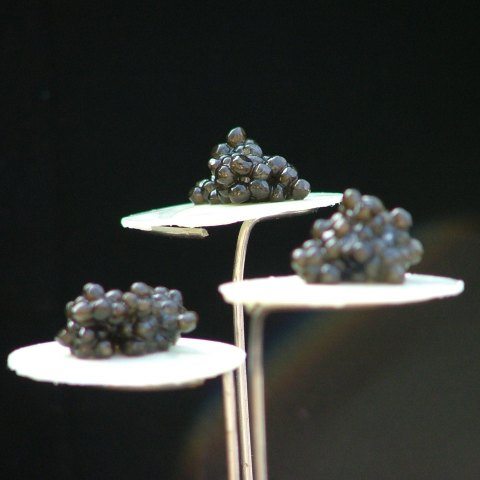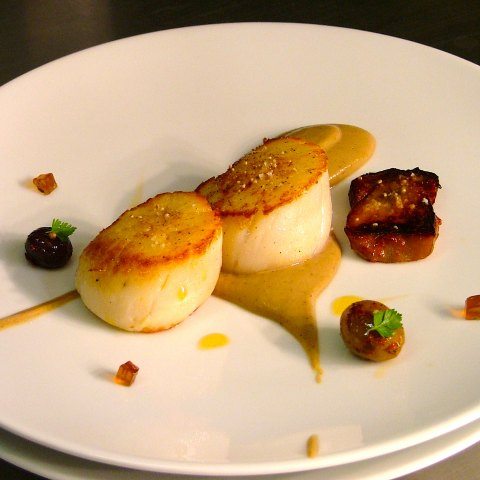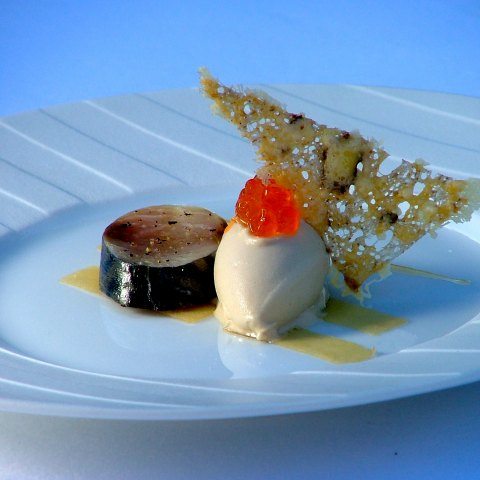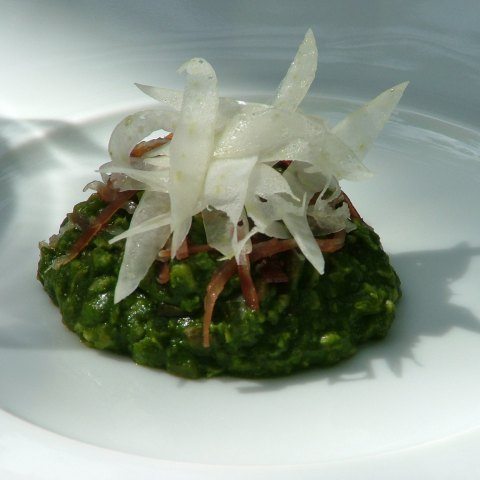Journal & Press
bits & pieces
life at the Fat Duck
Once upon a time in a land far far away I lived in a tiny village with two three star Michelin restaurants and I worked in one of them and these few anecdotes give a tiny glimpse of my time at a the Fat Duck
– the craziness of getting to be world number one –
I will never forget the week. It happened on 19th April 2005 when the restaurant I was working in which already had three Michelin Stars; was voted ‘The Best Restaurant in The World’. The week started normally, I was in the butchery section at the time so I was preparing and hanging Anjou pigeons from France and confiting their hearts and lungs. I was also boning out whole version from Northern Ireland and portioning them for service, and making ballotine of French Foie Gras all the normal three star stuff and generally keeping the stagiaire in line.
Heston and Ashley (the Head chef) came back from London with the award that day and then the madness began. The reservation system was overloaded with the number of people trying to book a table, which in turn crashed the internal phone system, a problem that would last for months. Bookings went from 60% to 100% in a matter of hours, which means full service lunch and dinner every day. We had only 42 seats which doesn’t sound much with 20 chefs, but when a diner gets 18 courses not including dessert it’s a lot of preparation and cooking. Our work load went from 15 hour days and one small break to 16/17 hour days with no breaks and frantic workloads in-between even more frantic services until staff numbers caught up with customer numbers.
We were featured in newspaper, T.V. and magazines around the world, as well as nearly all major UK stations Sky, BBC, ITV were doing live news broadcasts from outside the restaurants.
Heston’s “molecular gastronomy” was ‘á la mode’ in the culinary world. The world was divided with those who had tried sardine on toast ice-cream, quail jelly and snail porridge and those who had not!!!! The impact was like being catapulted from second division football to the Champions League final overnight.
While we had VIP’s before the award after, every week someone important was in; Tony Blair, Tom Hanks, Pierre Gagnaire, Hugh Fearnley-Whittingstall. After that it became common place to have a TV crew and photo shoot in the kitchen or restaurant, and soon the craziness became normal. I even did a live interview with RTÉ Radio One about working at the best restaurant in the world. Strangely enough I still am [at canteen]
– preparation for perfection –
Work days usually began at 7.30am with mise-en-place; the prep need for the coming lunch service, then cook staff food and clean down the kitchen. There was no staff room, so we just cooked and ate this standing in the kitchen. After this ‘break’ we scrubbed the whole kitchen and set up for lunch service with every station laying out its sauces foams, gels and everything needed for service.
The first lunch dish an amuse bouche; white chocolate and caviar {pic} which usually went out at 12.20 when the first guests arrived. Lunch service would run until 15.30, it takes a while to get 18 courses served. Then we cleaned the kitchen again and started mise-en-place for dinner. Which brings me back to my regular enough day, it was 16.30, I had 60 live, still in shell hand-dived scollops from Orkney in Scotland to shuck, de-coral and clean, cook part of staff dinner, my staff dinner and clean down again and set up for service for 18.00. I was relatively new to the entrée 1 section and scallops can be tricky bastards at the best of times. But there was extra pressure as Heston had been away filming for his new TV show In Search of Perfection and was back to run the kitchen and examine every detail of our work. While Ashley (head chef) was a hard task master and only accepted perfection, Heston demanded even more. He could taste a sauce or dish with 20 constitute parts and tell where you went wrong or cut a corner. He wanted every risotto, every snail porridge to taste amazing, they always needed a pinch more salt and touch more pepper (we had three types of salt and four type pf pepper at each section) a little dash of olive oil, a little perfection until the dish did not taste of its constitutes parts anymore but better, like a flavour not of this world.
For my part every scallop, had to be surgically removed from their shells and cooked to perfection. Perfection was 51C and only that would do. Each chef had a thermometer to ensure perfection. After being cooked to the perfect temperature scallops were deglazed with ver jus (all this while at the same time cooking two other dishes, warm a foam and plating main courses ) then served with sherry jelly, ceps and caramelised cauliflower
Entrée 1 stood between Heston and Ashley and while cooking two scallops to perfection I overcooked one to 55C (while we needed thermometers, Heston could just touch the scallop and tell it was overcooked) and not wanting to mess up and be seen to bin a £4.50 scallop, I quickly put the overcooked scallop into my pocket, and stuck another one into the pan. I worked the rest of the night with the overcooked bivalve in my pocket and could feel the burning shame of extra 4C heat through my pocket all night. After service and clean down I went to the back yard and laid him to rest under some cardboard in the compost bin.
While the highest standards were demanded it was not through bullying and shouting like many top level kitchens. The work had to be done and it had to be right, there were no excuses, but we could laugh and have fun.
While I can laugh now about the ‘scallop’ incident and many more like it, but the pressure from the amount of work and perfection required to work in that environment every day was immense.
– remembering where i was –
While working in the Best Restaurant in the World with Three Michelin stars was a privilege, it also just becomes the ‘job’ 17 hours a day. When you start it’s all new and exciting. The best ingredients, the best equipment, cutting edge techniques, molecular gastronomy, the strangeness of the dishes, the amazing detail in everything, but it also become repetitive and mundane. Like everything if you do it 500 times it becomes common place. The 400th time you shave white Alba truffle on a cauliflower and chocolate risotto or the 300th time you make snail porridge or mackerel ice-cream. It seems normal.
Then something reminds you that it’s not. Like when a guest requests to see the kitchen and asks you while cleaning down after 14 hours ‘whats it like to work with Heston’ or says ‘it must be amazing to work here’ or when RTÉ Radio One interviews you live on air about working at The Fat Duck and the cutting edge techniques being used. When I went back home for to a wedding and even my relations had heard of ‘The Fat Duck’ and wanted to know what Snail Porridge and Egg and Bacon Ice-Cream tasted like. And these and many other small things reminded me, I was lucky and getting the experience of a life time. Like a car enthusiast getting to driver a in a Formula One race, or someone who want to be a astronaut getting to fly a spaceship. For this short time in life I was at the pinnacle of food and Molecular Gastronomy and loving it.
So how did I end up working in the The Fat Duck? Well half way through studying for a Culinary Arts degree in DIT I watched a BBC kids program about taste and smell and there was this ‘chef’ Heston talking about our olfactory sense and our six tastes; sweet, salt, bitter, acid and umami. I had never even heard about umami, never mind how its flavour is formed in our brains and not our months. The more I researched about Heston the more he interested me; that cutting edge science was the backbone of modern cooking and the more we understood the better we cooked. No chefs in DIT or in fact Ireland at the time were talking about science and cooking in this way. So I then decided the Fat Duck was where I needed to go. So I sent the email and was lucky to get in there before the world found out about the Fat Duck
Writing this brought up a lot of good memories, probably enough for a FAT DUCK Part 2; the pigs head photo, 16 steps to make garlic butter and the ‘Willy Wonka/ mad Professor type person that was Heston and weird/strange ingredients we used on a daily basis; gellan gum, xanthan gum, meat glue and maltodextrin to create dishes like, egg and bacon ice-cream, quail jelly, chocolate jelly and hot and cold tea in the same glass and many more.



